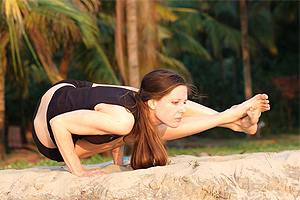
Kundalini Shakti - Kundalini Awakening
Kundalini shakti is the vital energy that resides at the base of the spine in the Muladhara(root) Chakra, according to traditional Indian yogic philosophy. It is also referred to as “serpent power”, since it resembles a coiled snake. Kundalini is a female deity, who embodies shakti, divine energy, power, strength, effort and capability.
The goddess Shakti is the wife of Shiva, she is affiliated with Lakshmi, Saraswati, Durga, Mahadevi, Kali and Radha.
Kundalini shakti is considered the life force or creative power that animates all living beings. It is believed that through various practices, such as yoga, meditation, pranayama, and spiritual disciplines, this energy can be awakened and harnessed to achieve spiritual growth, self-realization, and enlightenment.
The awakening of Kundalini shakti involves the realization of the unity of the individual self with the universal consciousness, and the uncoiling of the serpent power from the base of the spine to the crown of the head. This process is often described as a profound and transformative experience that can bring about significant changes in an individual’s life, including increased creativity, spiritual awareness, and physical and emotional well-being.
Kundalini yoga, a type of yoga practice that focuses on the awakening of the Kundalini energy, involves a combination of physical postures (asanas), breathing techniques (pranayama), meditation, and chanting.
The practice of Kundalini yoga is believed to have numerous benefits, including increased awareness, heightened creativity, enhanced intuition, deep relaxation, and spiritual growth. It is considered a powerful and transformative practice that can bring about significant changes in an individual’s life.
Yoga practices, including asana, pranayama and bandhas(energy locks), awaken kundalini and move kundalini shakti into the sushumna nadi. The sushumna nadi passes through the seven chakras and connect muladhara chakra to sahasrara chakra, the thousand petaled lotus at the crown of the head. of prana throughout the body. The Sushumna nadi is the pathway for the ascent of kundalini from the base of the spine to the crown of the head. Sushumna means etheric spine. According to kriya yoga, when pratyahara, withdrawal of the senses, is practiced, prana can be directed into the Sushumna nadi.
During pranayama(breath control) practice, when mula bandha, the root lock, and Jalandhara bandha, the chin lock, are firmly practiced at the end of the exhale and uddiyana bandha(the abdominal lock or flying lock) is practiced during rechaka kumbhaka(exhale retention), kundalini shakti can be awakened and moved into the Sushumna nadi.
It is recommended to practice asana for many years and perfect padmasana(lotus position) as well as advanced asana to purify the nadies(subtle energy channels), to increase the effect of pranayama practice, kumbhaka(breath retention), bandha(energy locks) practice and awaken kundalini.
Ashtanga vinyasa yoga includes a pranayama sequence, which is traditionally taught after completing advanced asana practice. The effects of nadi shodhana, subtle energy channel purification can be experienced practicing the asanas of the primary series. The postures of the primary series, can perfect padmasana, lotus position and jaladhara bandha(the chin lock) can be cultivated during postures such as halasana(plough pose) and sarvanghasana(shoulderstand). Mula bandha(the root lock) is to be practiced throughout all the asanas. It is a wonderful practice to focus on engaging mula bandha throughout the entire primary series.
If you’d like to learn Ashtanga yoga or improve your Ashtanga yoga practice and begin the process of kundalini awakening, you’re welcome to attend one of our upcoming yoga teacher trainings, retreats or workshops. To view our yoga training schedule please visit yoga training
